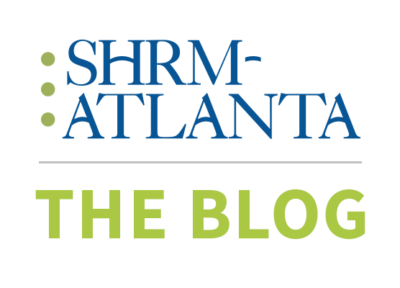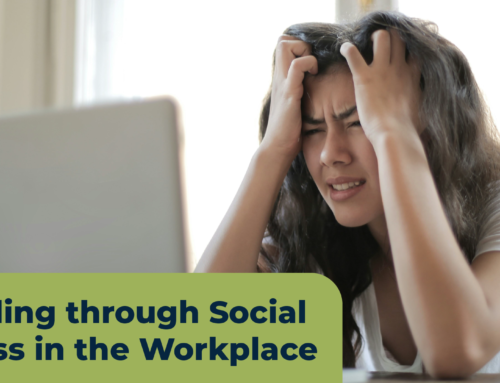From increased work hours or workload during the COVID-19 pandemic to feeling the pressure to be “always on,” more employees have experienced burnout than not. With a radically shifting employment landscape, rising employee mental health challenges, and the persistent threat of an economic recession, the topic of burnout has become a pressing concern for employers.
Burnout is defined as a syndrome resulting from chronic workplace stress that has not been successfully managed. It’s characterized by low energy or exhaustion, feelings of cynicism about one’s job, and lower productivity.
Quiet quitting then, is often used to cope with burnout. It has been defined in a couple of different ways — some describe it as not actively going above and beyond at work, while others see it as doing only the bare minimum to remain employed. Some defend quiet quitting as “just doing your job,” whereas others see it as a form of passive resistance to redraw the boundaries between their professional and personal lives.

How burnout impacts your business
It’s important to note that while burnout is not classified as a medical condition, it is an occupational phenomenon that can severely affect the mental and physical health of employees across all industries and roles. This is different fro
m having a bad week or a stressful project. Burnout is a consistent and prolonged state of being. Burned out workers are:1
- 63% more likely to take a sick day
- 2.6 times as likely to be actively looking for a different job
- 13% less confident in their performance
- 23% more likely to visit the emergency room
When unaddressed, the costs of burnout are too big to ignore. The financial burden of work-related stress and burnout in the U.S. amounts to approximately $190 billion a year in additional health care expenses.2 When you add in the cost of absenteeism, turnover, diminished productivity, and legal and insurance costs, it totals about $300 billion.3
It’s important to understand that burnout starts with moderate stress and discouragement, but often ends with physiological stress symptoms that can have long-term, negative effects on an employee’s health.
Once an employee is experiencing burnout syndrome, the support and care they need may be beyond the workplace. This is one reason why it’s crucial for managers to spot the signs of burnout early, and for leaders to establish a workplace culture where the causes of burnout are reduced and employees feel comfortable reaching out for support when they need it.
Burnout is everywhere, but how people respond is different
Burnout may be common in the workplace, but the physical symptoms and the broader consequences vary by person, role, and industry.
In addition to creating and encouraging an empathetic culture, employers need to adopt a proactive approach to managing the unique needs of each individual employee. Some employees benefit from feeling more involved at work, whereas others might need space to step away and decompress. Managers cannot adopt a “one size fits all” approach to mitigating burnout.
As you look at the top 5 causes of burnout, it’s important to think about the different ways employees might respond, which can be subjective and deeply personal.

The top 5 causes of employee burnout:
1. Unfair treatment at work
Employees who strongly agree that they are often treated unfairly at work are 2.3 times more likely to experience a high level of burnout.4
Bias, favoritism, and mistreatment by a coworker are all considered unfair treatment, as well as unfair compensation or corporate policies. It is illegal to treat somebody in an unfair way, including harassment, because of their age, gender, race, or sexual orientation — and this should be reflected in most employers’ discrimination policies.

2. Unmanageable workloads
According to a survey from the end of 2020, 45% of people who shifted to remote work because of the pandemic said they were working more than they were before. Even more alarming, nearly 70% said they were now working on weekends.5 The volume of work has persisted even as the pandemic has waned, and many employees have found themselves working well beyond their scheduled hours. Quiet quitting has arisen as a means of coping with these unrealistic expectations.
Additionally, with budgets getting tighter and resources under pressure in many industries, workloads can quickly pile up and become unmanageable. Even high-performing employees can quickly begin to feel hopeless as workloads become increasingly demanding and unsustainable.
3. Lack of role clarity
Only about half of workers can strongly agree that they know what’s expected of them at work.6 When accountability and expectations are moving targets, employees struggle to figure out what “success” looks like for them in their role. They can feel unsupported and aimless. A lack of measurable goals, targets, or recognizable accomplishments can contribute to a feeling of disengagement, career stagnation, and eventually even the choice to “quiet quit” while they look for something more fulfilling.
4. Lack of communication and support from managers
Employees who strongly agree that they feel supported by their manager are about 70% less likely to experience burnout.7 In contrast, when a manager is negligent or confrontational, employees feel uninformed, alone, and defensive. It’s not as easy or organic for managers and their direct reports to have regular, informal catch-ups in a virtual setting. Managers need to be supported to make time for these important moments of connection.
In addition to employees having supportive, regular conversations with their direct managers, they should also have clear channels to communicate with human resources if they don’t feel safe speaking to their manager directly.
5. Unreasonable time pressure
When employees say they often or always have enough time to get their work done, they’re 70% less likely to experience high burnout.8 Efficiency is often seen as a virtue, but when employees feel under pressure to rush work, the quality of their effort inevitably suffers. This can erode fulfillment for employees who take pride in their outputs. Of course, there are scenarios in every industry where deadlines simply must be met, but this responsibility should be shared by the wider team, not dependent on a single employee.
10 questions to evaluate your workplace
The goal is to create an environment in which employees feel safe to prioritize their mental well-being — an environment in which employees know that their employer will support them with the time, resources, and guidance to manage w
ork stress productively. Employees should feel secure that their future success within the organization will not come at the cost of their work/life balance.
Here are some questions to help you assess whether you’ve created this kind of environment for your organization:
 Are the responsibilities for each role clearly documented for employees?
Are the responsibilities for each role clearly documented for employees?- Are workloads reasonable?
- Do employees feel that they have enough time to complete their work?
- Do employees have a sense of ownership and control over their work?
- Are employees included in discussions about how work is done and how important decisions are made?
- Do employees have a say in how they do their jobs?
- Is there respect among peers and between teams?
- Do employees receive recognition for their efforts and accomplishments?
- What mental health resources or support is available to help managers to support their staff?
- How are you supporting your middle managers?
The days of promoting hustle culture, corporate stoicism, and a lack of work/life balance are on the way out. The pandemic reshuffled the priorities and expectations of employees on a global scale, and employers are being called on to help adapt the work environment accordingly.




